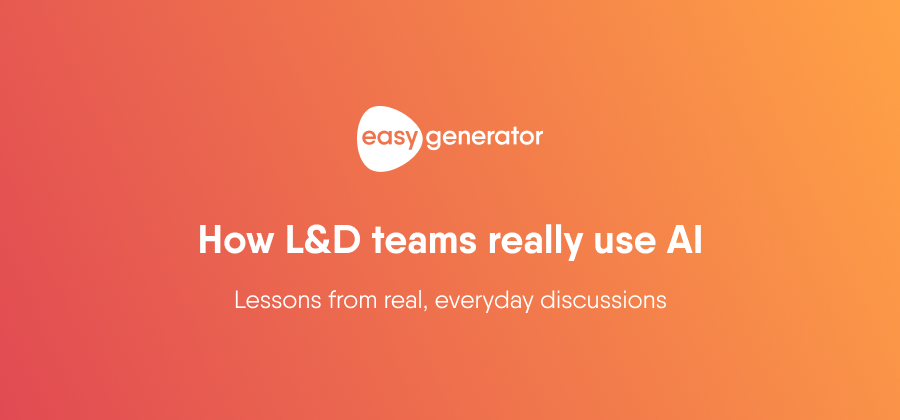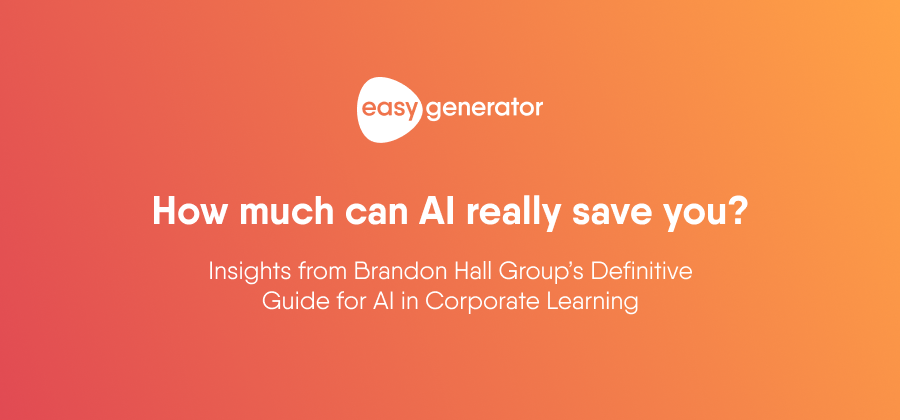How to create an effective training program in 7 steps
Designing a training program isn’t just for employees who are starting out on the job. Continuous skills training ensures you’re continuing to set your workforce up for success. That’s why it’s important to know how to set up a training program for your employees — the right way. We’ll walk you through seven basic steps in developing an effective training program in an organization.

In business, there aren’t a lot of guarantees. However, a few years back, a study by the American Society for Training and Development (now known as the Association for Talent Development) discovered an unmistakable link between implementing a formal training program and increasing your organization’s profitability.
In fact, this study found that organizations with an established training program enjoy more than 218% more revenue per employee and a staggering 24% higher profit margin than organizations with no training program.
In other words, starting an effective training program isn’t about guaranteeing business success but about optimizing your organization to achieve it.
So, what is a training program?
“Training” is a part of any job or workplace. We all learn things (usually from our peers or supervisors) as we master a new job. However, a “training program” is a thoughtfully designed, formal learning path (like a curriculum or series of courses). It systematically equips employees with the skills they need to excel at work.
Instead of simply hiring employees and hoping they’ll have the necessary background knowledge or figure out things for themselves, a formal training program ensures that every employee gains the skills and knowledge they need. That’s why we’re here to help you learn how to create an effective online training program.
7 steps in designing a training program
Now, you might still be wondering how to create an effective training program. What steps should you take to design an effective program for employees? If your organization is ready to design a comprehensive training program for employees, check out the following training design steps. These basic steps guide you through the decision-making process and help you to create a training plan for employees, so your organization can start reaping all the amazing benefits.
1. Assess training needs
Start by looking at areas of your business where skills need to be improved. For example, before you develop a training plan, determine if your organization might be struggling to maintain a high level of customer satisfaction. If so, this would be an opportunity for you to implement customer success training to ensure your employees have the right skills.
Make sure that you identify the areas where additional education will help your organization achieve its business goals. Remember, training must have a practical objective.
2. Pick a training method
There’s no right or wrong when it comes to picking a training method. Ask yourself which approach suits your employees best. For example:
- Online training: Employees acquire knowledge in a virtual learning environment.
- Classroom training: Employees learn face-to-face from a trainer.
- Blended learning: A combination of online and classroom training.
Mobile training is often beneficial too. This lets learners access knowledge through their mobile devices. New technology makes it easy and affordable to create an online training program for various devices.
“Microlearning” is another method that is quickly gaining popularity due to its effectiveness. It involves providing compact bits of useful knowledge (through an online learning platform or mobile app, for example). Information in small doses is easier to digest and encourages repeat viewing, so learners internalize knowledge more effectively.
3. Pick the right tools
Once you’ve decided on the best method to develop a training program, pick smart tools to ensure your learners can easily access training information. This is also a financial decision because your organization must invest wisely in its new training resources to keep costs under control.
Cloud-based e-learning platforms are an ideal solution, usually available on an affordable subscription basis. Choose a platform like Easygenerator, which enables employees to author and publish training content themselves. Solutions like this boost learner engagement and produce better learning outcomes. They are also easily combinable with classroom training, mobile learning, and microlearning.
Discover e-learning tools for Mac.
4. Start creating content
Next, it’s time to start writing courses and educational resources (let’s just call this “learning content” for short). Generally, there are two ways to create learning content:
Top-down: Your organization hires learning & development (L&D) professionals who are responsible for creating and maintaining all the learning content themselves.
Bottom-up: Your organization gives employees themselves the tools to create, share and maintain their own learning resources.
The bottom-up method (also known as “Employee-generated Learning”) presents many advantages compared to the top-down method. It enables the organization to quickly create an effective knowledge base. It draws on the knowledge of experienced employees (or “subject matter experts”) who have a wealth of on-the-job expertise to share with their peers.
Also, creating engaging content is important. Learn how to make an interactive training model.
5. Publish the learning content
Once learning content has been created, whether by your L&D team or by subject matter experts, it’s time to publish it. This gives your employees access to the content, so they can use it to learn.
The easiest way to reach large numbers of employees is to set up a training program for employees that can be easily published and shared online. You can publish content via your company’s website, which may involve an increased IT workload and higher costs. Or you can publish via a cloud-based learning platform. Easygenerator actually doubles as a content creation tool and a publishing platform, making it a useful, cost-effective choice.
6. Evaluate your training program
So, your content is published and now it’s time to see how effective it is. Modern e-learning platforms include tools for tracking how well employees are doing on assessments, and monitoring key metrics like course completion rates.
Another excellent quality metric is “net promoter score” (NPS). This tracks the quality of a course simply by asking participants whether they would recommend the course to their peers. It gives course creators a clear view of whether learners consider the content valuable and useful. Look for an authoring tool like Easygenerator which includes NPS as a standard feature. This helps you maintain a high level of quality in your learning content.
7. Keep courses updated
Lastly, you’ve got to make sure content is kept updated. The business is continually evolving, so training content must be tweaked to ensure it’s relevant to the challenges employees actually face.
“Top-down” content creation (see Step 4 above) makes it harder to keep content updated because there are usually fewer people working on creating content. The process is much slower, and these individuals are probably not working on the business side of the organization every day, so they lack the first-hand expertise that it takes to ensure the content is relevant.
This is why an Employee-generated Learning approach is highly recommended. With this approach, employees update the content on a rolling basis, so information is always relevant and accurate.
Why is a training program so beneficial to your business?
Not only do you know how to create a training plan, but you also know that it can benefit your business in many ways when done right. Primarily, it ensures a consistent level of skill and knowledge throughout your organization’s workforce. It also boosts engagement by showing employees that your organization cares about their professional development. Engaged employees are likelier to remain within the company and perform better on the job.
Make sure to learn what is on-demand training.
Create your training program with Easygenerator
Now that you know how to develop a training program, we’d recommend a scalable approach to create your content known as Employee-Generated Learning (EGL). Under EGL, subject matter experts throughout the organization (employees) create learning content themselves.
This approach enables employees to share their knowledge with each other directly without having to involve an instructional designer in the creation process. Not only does this speed up the circulation of knowledge throughout the organization, but it also frees up your L&D team’s capacity to focus on other pressing tasks in their backlog that can’t be handed off.
But to successfully execute EGL, you’ll need an easy-to-use authoring tool that any employee can navigate. Between Easygenerator’s drag-and-drop course creator, in-app support, onboarding sessions, and personalized coaching, we ensure that any employee can confidently create engaging training.
With a tool like Easygenerator and a scalable approach like EGL, you’ll know how to develop an effective training plan that’s not just for employees but also by employees. That way, your learners can rest assured knowing their content is coming from people who have first-hand experience with their knowledge needs.




